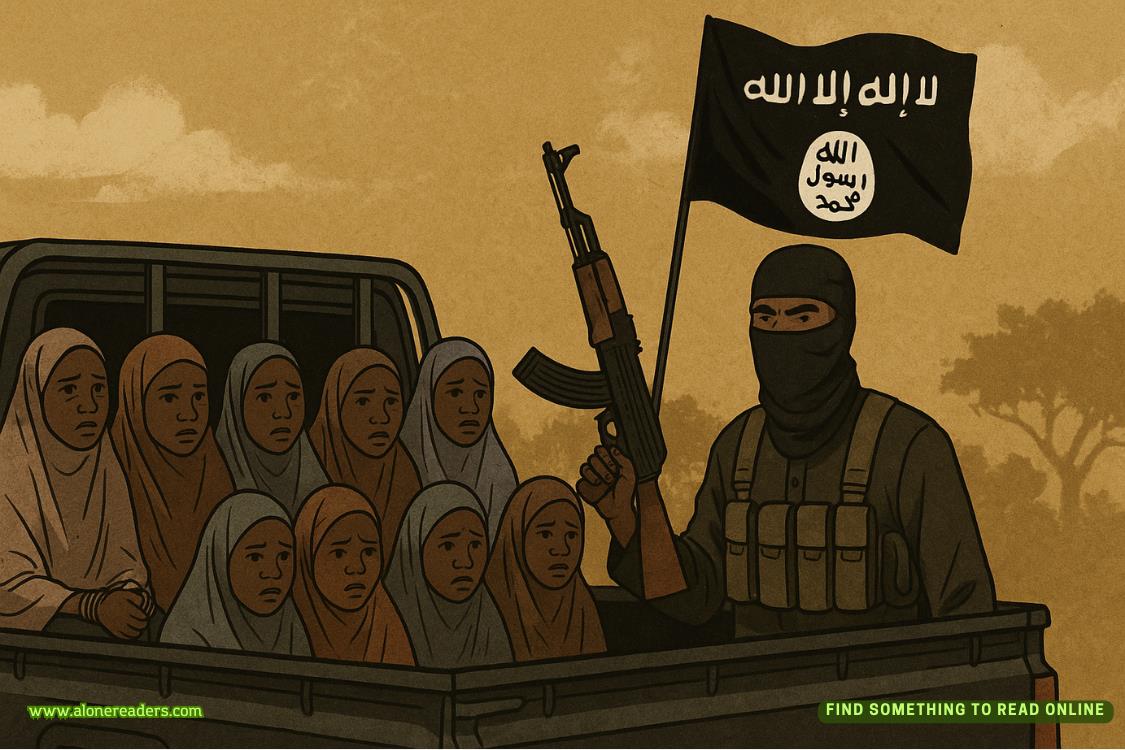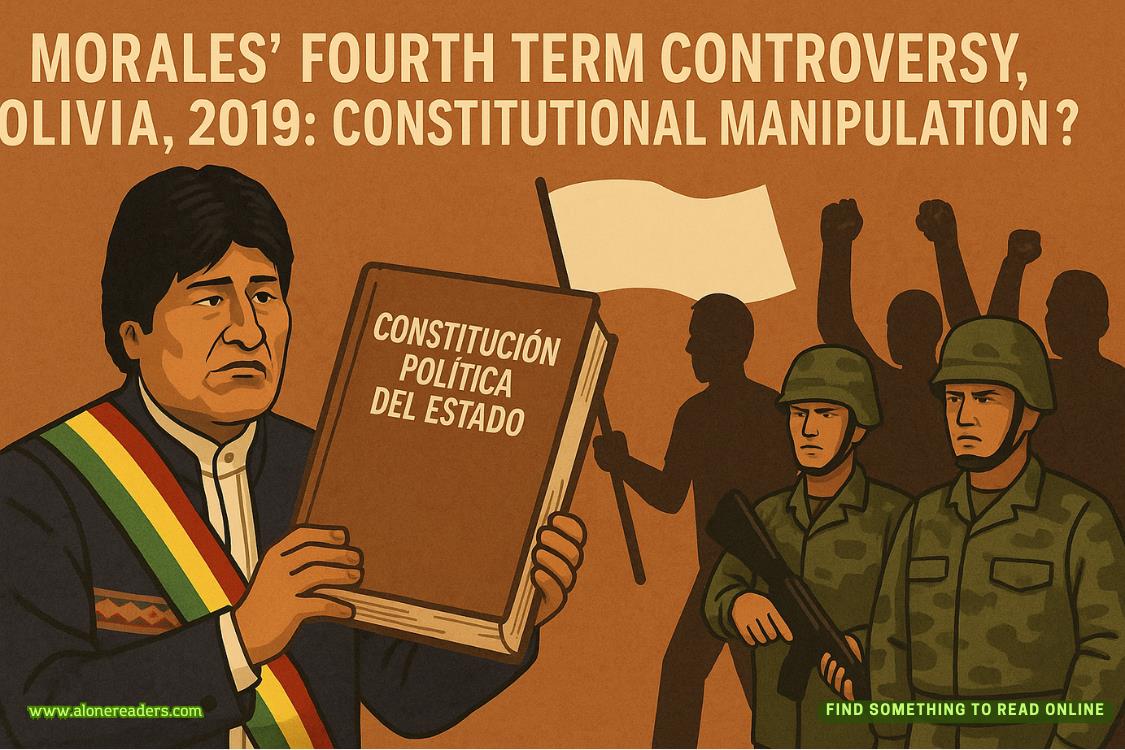Daylight came slowly to the depths of the forest. When the child awoke it was well into the morning, but in the thick shade it was difficult to tell. She had wandered away from the stream as daylight faded the previous evening, and an edge of panic threatened as she looked around her at nothing but trees.
Thirst made her aware of the sound of gurgling water. She followed the sound and felt relieved when she saw the small river again. She was no less lost near the stream than she was in the forest, but it made her feel better to have something to follow, and she could quench her thirst as long as she stayed near it. She had been glad enough for the flowing water the day before, but it did little for her hunger.
She knew greens and roots could be eaten, but she didn’t know what was edible. The first leaf she tasted was bitter and stung her mouth. She spit it out and rinsed her mouth to remove the taste, but it made her hesitant to try another. She drank more water for the temporary feeling of fullness and started downstream again. The deep woods frightened her now and she stayed close to the stream where the sun was bright. When night fell, she dug a place out of the needled ground and curled up in it again.
Her second night alone was no better than her first. Cold terror lay in the pit of her stomach along with her hunger. She had never been so terrified, she had never been so hungry, she had never been so alone. Her sense of loss was so painful, she began to block out the memory of the earthquake and her life before it; and thoughts of the future brought her so close to panic, she fought to push those fears from her mind as well. She didn’t want to think about what might happen to her, who would take care of her.
She lived only for the moment, getting past the next obstacle, crossing the next tributary, scrambling over the next log. Following the stream became an end in itself, not because it would take her anywhere, but because it was the only thing that gave her any direction, any purpose, any course of action. It was better than doing nothing.
After a time, the emptiness in her stomach became a numb ache that deadened her mind. She cried now and then as she plodded on, her tears painting white streaks down her grubby face. Her small naked body was caked with dirt; and hair that had once been nearly white, and as fine and soft as silk, was plastered to her head in a tangle of pine needles, twigs, and mud.
Traveling became more difficult when the evergreen forest changed to more open vegetation and the needle-covered forest floor gave way to obstructing brush, herbs, and grasses, the characteristic ground cover beneath small-leafed deciduous trees. When it rained, she huddled in the lee of a fallen log or large boulder or overhanging outcrop, or simply slogged through the mud letting the rain wash over her. At night, she piled dry brittle leaves left over from the previous season’s growth into mounds and crawled into them to sleep.
The plentiful supply of drinking water kept dehydration from making its dangerous contribution to hypothermia, the lowering of body temperature that brought death from exposure, but she was getting weak. She was beyond hunger; there was only a constant dull pain and an occasional feeling of light-headedness. She tried not to think about it, or about anything except the stream, just following the stream.
Sunlight penetrating her nest of leaves woke her. She got up from the snug pocket warmed by her body heat and went to the river for a morning drink, damp leaves still clinging to her. The blue sky and sunshine were welcome after the rain of the day before. Shortly after she started out, the bank on her side of the river gradually began to rise. By the time she decided to stop for another drink, a steep slope separated her from the water. She started down carefully but lost her footing and tumbled all the way to the bottom.
She lay in a scraped and bruised heap in the mud near the water, too tired, too weak, too miserable to move. Large tears welled up and streamed down her face, and plaintive wails rent the air. No one heard. Her cries became whimpers begging someone to come and help her. No one came. Her shoulders heaved with sobs as she cried her desperation. She didn’t want to get up, she didn’t want to go on, but what else could she do? Just stay there crying in the mud?
After she stopped crying, she lay near the water’s edge. When she noticed a root beneath her jabbing uncomfortably in her side and the taste of dirt in her mouth, she sat up. Then, wearily, she stood up and went to the stream for a drink. She started walking again, doggedly pushing aside branches, crawling over moss-covered logs, splashing in and out of the edge of the river.
The stream, already high from earlier spring floods, had swelled to more than double from tributaries. The child heard a roar in the distance long before she saw the waterfall cascading down the high bank at the confluence of a large stream with the small river, a river about to double again. Beyond the waterfall, the swift currents of the combined watercourse bubbled over rocks as it flowed into the grassy plains of the steppes.
The thundering cataract rushed over the lip of the high bank in a broad sheet of white water. It splashed into a foaming pool worn out of the rock at the base, creating a constant spray of mist and whirlpools of countercurrents where the rivers met. At some time in the distant past, the river had carved deeper into the hard stone cliff behind the waterfall. The ledge over which the water poured jutted out beyond the wall behind the falling stream, forming a passageway between.
The girl edged in close and looked carefully into the damp tunnel, then started behind the moving curtain of water. She clutched at the wet rock to steady herself as the continuous falling, falling, falling of the flowing stream made her dizzy. The roar was deafening, rebounding from the stone wall in back of the tumultuous flow. She looked up fearfully, anxiously aware that the stream was above the dripping rocks over her head, and crept forward slowly.
She was nearly to the other side when the passageway ended, gradually narrowing until it was a steep wall again. The undercut in the cliff did not go all the way; she had to turn around and go back. When she reached her starting place, she looked at the torrent surging over the edge and shook her head. There was no other way.
The water was cold as she waded into the river, and the currents strong. She swam out to the middle and let the flow of the water carry her around the falls, then angled back to the bank of the widened river beyond. The swimming tired her, but she was cleaner than she had been for some time, except for her matted and tangled hair. She started out again feeling refreshed, but not for long.
The day was unseasonably warm for late spring, and when the trees and brush first gave way to the open prairie, the hot sun felt good. But as the fiery ball rose higher, its burning rays took their toll of the small girl’s meager reserves. By afternoon, she was staggering along a narrow strip of sand between the river and a steep cliff. The sparkling water reflected the bright sun up at her, while the almost-white sandstone bounced light and heat down, adding to the intense glare.
Across the river and ahead, small herbaceous flowers of white, yellow, and purple, blending into the half-grown grass bright green with new life, extended to the horizon. But the child had no eyes for the fleeting spring beauty of the steppes. Weakness and hunger were making her delirious. She started hallucinating.
“I said I’d be careful, mother. I only swam a little ways, but where did you go?” she muttered. “Mother, when are we going to eat? I’m so hungry, and it’s hot. Why didn’t you come when I called you? I called and called, but you never came. Where have you been? Mother? Mother! Don’t go away again! Stay here! Mother, wait for me! Don’t leave me!”
She ran in the direction of the mirage as the vision faded, following the base of the cliff, but the cliff was pulling back from the water’s edge, veering away from the river. She was leaving her source of water. Running blindly, she stubbed her toe on a rock and fell hard. It jarred her back to reality—almost. She sat rubbing her toe, trying to collect her thoughts.
The jagged sandstone wall was pockmarked with dark holes of caves and streaked with narrow cracks and crevices. Expansion and contraction from extremes of searing heat and subzero col
d had crumbled the soft rock. The child looked into a small hole near the ground in the wall beside her, but the tiny cave made little impression.
Far more impressive was the herd of aurochs grazing peacefully on the lush new grass between the cliff and the river. In her blind rush to follow a mirage, she hadn’t noticed the huge reddish brown wild cattle, six feet high at the withers with immense curving horns. When she did, sudden fear cleared the last cobwebs from her brain. She backed closer to the rock wall, keeping her eye on a burly bull that had stopped grazing to watch her, then she turned and started running.
She glanced back over her shoulder and caught her breath at a swift blur of movement, and stopped in her tracks. An enormous lioness, twice as large as any feline who would populate savannas far to the south in a much later age, had been stalking the herd. The girl stifled a scream as the monstrous cat vaulted for a wild cow.
In a flurry of snarling fangs and savage claws, the giant lioness wrestled the massive aurochs to the ground. With a crunch of powerful jaws, the terrified bawl of the bovine was cut short as the huge carnivore tore out its throat. Spurting blood stained the muzzle of the four-legged hunter and sprayed her tawny fur with crimson. The aurochs’s legs jerked spasmodically even as the lioness ripped open its stomach and tore out a chunk of warm, red meat.
Stark terror charged through the girl. She fled in wild panic, carefully watched by another of the great cats. The child had stumbled into the territory of cave lions. Normally the large felines would have disdained so small a creature as a five-year-old human as prey, preferring a robust aurochs, oversize bison, or giant deer to satisfy the needs of a pride of hungry cave lions. But the fleeing child was approaching much too near to the cave that housed a pair of mewling newborn cubs.
Left to guard the young while the lioness hunted, the shaggy-maned lion roared in warning. The girl jerked her head up and gasped at the gigantic cat crouched on a ledge, ready to spring. She screamed, slid to a stop, falling and scraping her leg in the loose gravel near the wall, and scrambled to turn around. Spurred on by even greater fear, she ran back the way she had come.
The cave lion leaped with languid ease, confident of his ability to catch the small interloper who dared to broach the sanctity of the cave nursery. He was in no hurry—she moved slowly compared with his fluid speed—and he was in the mood for a game of cat and mouse.
In her panic, it was only instinct that led her to the small hole near the ground in the face of the cliff. Her side aching, and gasping for breath, she squeezed through an opening barely big enough for her. It was a tiny, shallow cave, not much more than a crack. She twisted around in the cramped space until she was kneeling with her back to the wall, trying to melt into the solid rock behind her.
The cave lion roared his frustration when he reached the hole and found his chase thwarted. The child trembled at the sound and stared in hypnotized horror as the cat snaked his paw, sharp curved claws outstretched, into the small hole. Unable to get away, she watched the claw come at her and shrieked in pain as it sunk into her left thigh, raking it with four deep parallel gashes.
The girl squirmed to get out of his reach and found a small depression in the dark wall to her left. She pulled her legs in, scrunched up as tight as she could, and held her breath. The claw slowly entered the small opening again, nearly blocking the scant light that penetrated the niche, but this time found nothing. The cave lion roared and roared as he paced back and forth in front of the hole.
The child remained in the small cramped cave through the day, that night, and most of the following day. The leg swelled and the festering wound was a constant pain, and the small space inside the rough-walled cave had little room to turn or stretch out. She was delirious most of the time from hunger and pain and dreamed terrifying nightmares of earthquakes, and sharp claws, and lonely aching fear. But it wasn’t her wound or her hunger or even her painful sunburn that finally drove her from her refuge. It was thirst.
She looked fearfully out of the small opening. Sparse stands of wind-stunted willow and pine near the river cast long shadows of early evening. The child stared at the grass-covered stretch of land and the sparkling water beyond for a long time before gathering up enough courage to move beyond the entrance. She licked cracked lips with a parched tongue as she scanned the terrain. Only the windswept grass moved. The lion pride was gone. The lioness, anxious for her young and uneasy about the unfamiliar scent of the strange creature so near their cave, decided to find a new nursery.
The child crept out of the hole and stood up. Her head throbbed and spots danced dizzily before her eyes. Waves of pain engulfed her with every step and her wounds began to ooze a sickly yellow green down her swollen leg.
She wasn’t sure if she could reach the water, but her thirst was overpowering. She fell to her knees and crawled the last few feet, then stretched out flat on her stomach and gulped greedy mouthfuls of cold water. When her thirst was finally slaked, she tried to stand again, but she had reached the limit of her endurance. Spots swam before her eyes, her head whirled, and everything went dark as she slumped to the ground.
A carrion bird circling lazily overhead spied the unmoving form and swooped lower for a closer look.
2
The band of travelers crossed the river just beyond the waterfall where it widened and foamed around rocks jutting up through the shallow water. They were twenty in number, young and old. The clan had totaled twenty-six before the earthquake that destroyed their cave. Two men led the way, far in front of a knot of women and children flanked by a couple of older men. Younger men trailed behind.
They followed the broad stream as it began its braided, meandering course across the flat steppes, and watched the carrion birds circling. Flying scavengers usually meant that whatever had attracted their attention was still alive. The men in the lead hurried to investigate. A wounded animal was easy prey for hunters, providing no four-legged predators had similar ideas.
A woman, midway along in her first pregnancy, walked in front of the rest of the women. She saw the two men in the lead glance at the ground and move on. It must be a meat eater, she thought. The clan seldom ate carnivorous animals.
She was just over four and a half feet tall, large boned, stocky, and bow-legged, but walked upright on strong muscular legs and flat bare feet. Her arms, long in proportion to her body, were bowed like her legs. She had a large beaky nose, a prognathous jaw jutting out like a muzzle, and no chin. Her low forehead sloped back into a long, large head, resting on a short, thick neck. At the back of her head was a boney knob, an occipital bun, that emphasized its length.
A soft down of short brown hair, tending to curl, covered her legs and shoulders and ran along the upper spine of her back. It thickened into a head of heavy, long, rather bushy hair. She was already losing her winter pallor to a summer tan. Big, round, intelligent, dark brown eyes were deep set below overhanging brow ridges, and they were filled with curiosity as she quickened her pace to see what the men had passed by.
The woman was old for a first pregnancy, nearly twenty, and the clan thought she was barren until the life stirring within her started to show. The load she carried had not been lightened because she was pregnant, however. She had a large basket strapped to her back, with bundles tied behind, hanging below, and piled on top of it. Several drawstring bags dangled from a thong, which was wrapped around the pliable hide she wore in such a way as to produce folds and pouches for carrying things. One bag was particularly distinctive. It was made from an otter hide, obviously so because it had been cured with its waterproof fur, feet, tail, and head left intact.
Rather than a slit in the skin of the animal’s belly, only the throat had been cut to provide an opening to remove the innards, flesh, and bones, leaving a pouchlike bag. The head, attached by a strip of skin at the back, was the cover flap, and a red-dyed cord of sinew was threaded through holes punched around the neck opening, drawn tight, and tied to the thong at her waist.
When t
he woman first saw the creature the men had left behind, she was puzzled by what appeared to be an animal without fur. But when she drew closer, she gasped and stepped back a pace, clutching the small leather pouch around her neck in an unconscious gesture to ward off unknown spirits. She fingered the small objects inside her amulet through the leather, invoking protection, and leaned forward to look closer, hesitant to take a step, but not quite able to believe she saw what she thought she was seeing.
Her eyes had not deceived her. It was not an animal that had drawn the voracious birds. It was a child, a gaunt, strange-looking child!
The woman looked around, wondering what other fearful enigmas might be nearby, and started to skirt the unconscious child, but she heard a moan. The woman stopped and, forgetting her fears, knelt beside the child and shook her gently. The medicine woman reached to untie the cord that held the otter-skin bag closed as soon as she saw the festering claw marks and swollen leg when the girl rolled over.
The man in the lead glanced back and saw the woman kneeling beside the child. He walked back to them.
“Iza! Come!” he commanded. “Cave lion tracks and scat ahead.”
“It’s a child, Brun. Hurt but not dead,” she replied.
Brun looked at the thin young girl with the high forehead, small nose, and strangely flat face. “Not Clan,” the leader gestured abruptly and turned to walk away.
“Brun, she’s a child. She’s hurt. She’ll die if we leave her here.” Iza’s eyes pleaded as she made the hand signals.
The leader of the small clan stared down at the imploring woman. He was much bigger than she, over five feet tall, heavily muscled and powerful, with a deep barrel chest and thick bowed legs. The cast of his features was similar, though more pronounced—heavier supraorbital ridges, larger nose. His legs, stomach, chest, and upper back were covered with a coarse brown hair that was not enough to be called a pelt, but not far from it. A bushy beard hid his chinless jutting jaw. His wrap was similar, too, but not as full, cut shorter, and tied differently, with fewer folds and pouches for holding things.















